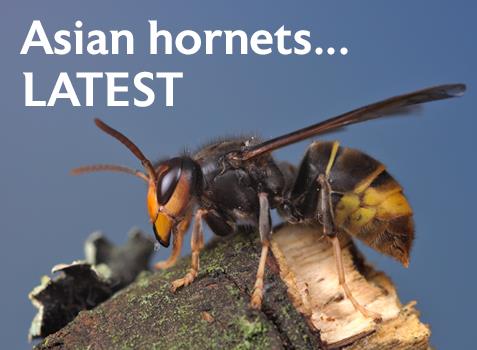Tracking Asian hornets - how it's done
At its closest point on the east side of the island Jersey is only fifteen miles away from the French mainland, an easy flight for a wind assisted Asian Hornet queen freshly out of hibernation. The east coast of the island offers perfect habitat with wooded valleys, warm coastal environments and a varied supply of insects.
Modified Thornes wasp traps are deployed along the east and south east coastal areas in the Spring in the hope of catching a percentage of these queens and are checked daily to minimise by-catch. Each has a series of six-millimetre holes drilled around the container at just over half its height which enables wasps and the early worker bumblebees to escape while retaining the hornet queens. The attractant is contained in a small plastic pot with a cloth wick fitted which attracts insects without contaminating or drowning them and the hornets can be removed and analysed to verify that they are viable queens.
A public awareness campaign ensures that a significant number of the queens that are not caught in traps are spotted and reported to the Hornet Co-ordinator hopefully with an image that helps confirmation. He then passes the details on to a team member who lives close to the location and they verify the sighting, open an online Epicollect5 report and set up the initial traps in the area.
Whenever a sighting of Asian Hornets is confirmed by a team member a tracking case number is raised and a team assigned to run it. The initial team will contain a minimum of two trackers and as and when it is decided that more coverage may be needed so others are drawn in.
Case number 16 proved to be the first secondary nest of the year and started life when I visited one of our apiaries on the east coast of the island. The hives are on the edge of a wooded valley that slopes down to the seashore that lays half a kilometre to the east. I had set up a spring trap close by and this particular one had caught four queens over the course of a four week period so I had kept it baited and checked daily for when (not if) worker hornets turned up.
On 4th July I caught, marked and released two workers who promptly flew up into the trees and stayed there cleaning themselves. I set two traps further down a nearby lane and checked them on the following day to find plenty of wasps but no hornets.
On the 6th I moved the two lower traps, placed one further down the hill and set up an open wick station on a wall nearby and monitored it. A small hornet turned up twenty minutes later, was left to fly away and return and then marked and its flight direction and time recorded. Initially it took 15 minutes to return before settling down to return every 3.25 minutes which we know from past experience equates roughly to an end point distance of 325 meters. Plotting it on a Google map put that point offshore so clearly the hornet was not flying in a straight line. During the afternoon my wife and I set up wick stations in fields behind a nearby farmhouse at ninety degrees to the north of the original station, monitored and marked visiting hornets and plotted their track lines. As expected, these crossed at roughly ninety degrees to the first line with similar return times and therefore supposed distances travelled.
All traps and stations were removed to the other side of the farm as well as down onto the eastern coastal edge and then left overnight to begin drawing in insects. On the 7th the traps were replaced with wick stations and any hornets marked and released. Very similar times and directions were obtained and so these stations were again moved to the south in order to acquire back markers and left to breath.
The next two days were very windy and wet (yes it does rain in Jersey) and so no tracking was undertaken. The 10th saw a fine warm morning with a high tide, dolphins passing in the bay and even better, hornets returning from the south to the north in under two minutes. The wick station with the shortest return times was closely monitored and the direction of the hornets indicated that the nest was situated somewhere nearby on the side of a wooded valley. I carefully checked the slopes under the trees and saw no evidence of flying hornets so moved out into a field just north of the tree line and scanned the east side of the surrounding trees and located a small rugby ball sized nest at the top of a tall Holm Oak.
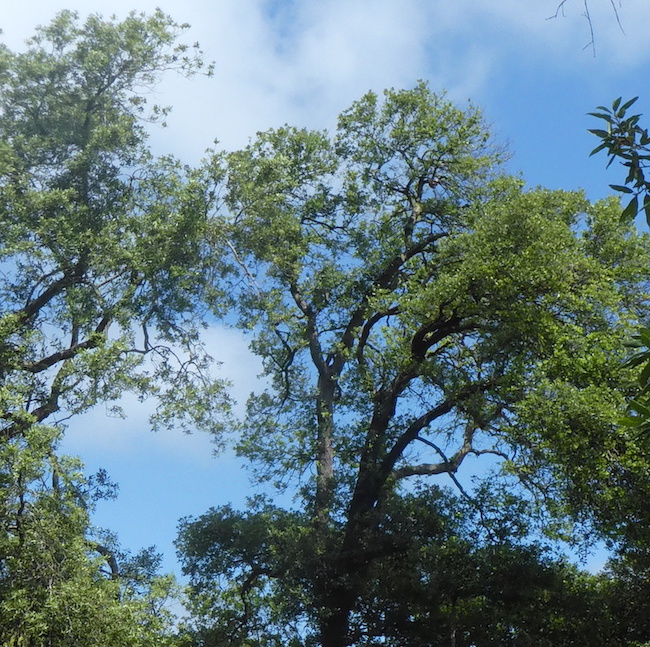
I then filled out an online Epicollect5 report and contacted our co-ordinator to confirm the find.
It took a total combined time of 21 hours to track down the nest and it was then chemically treated by a rope access crew. The climber wearing a hornet suit used a telescopic lance system that delivered Zerok P a natural pyrethrum directly into the heart of the nest on the morning of the 12th July.
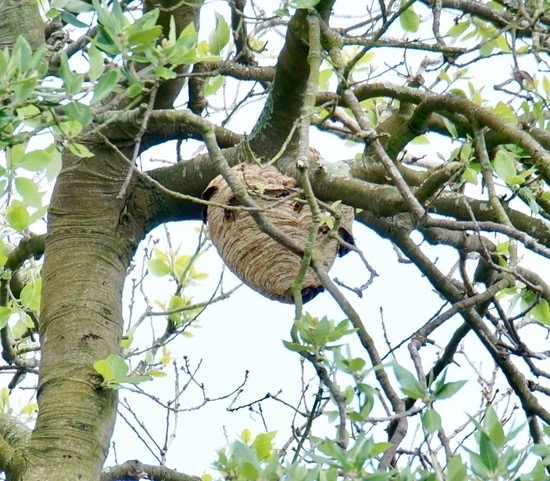
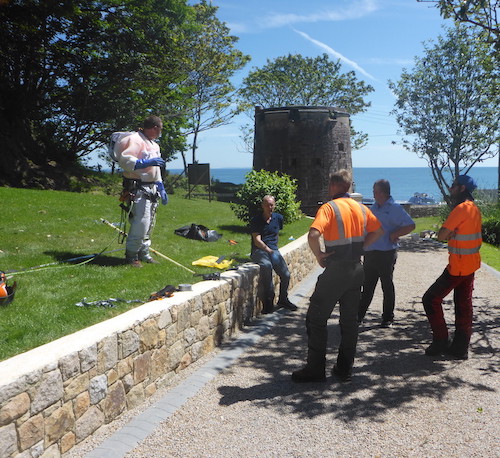
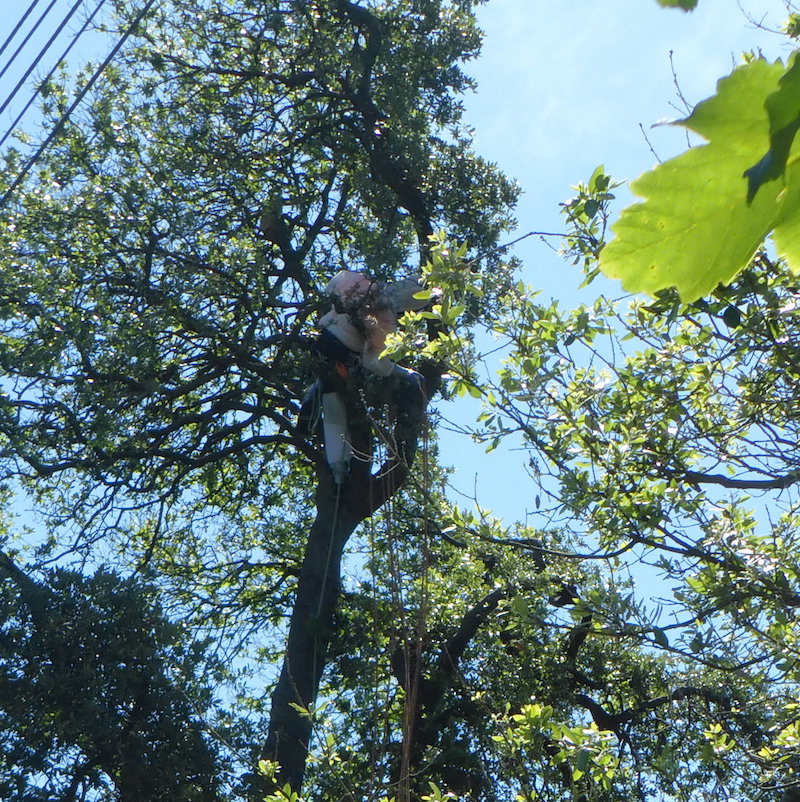
Note: All tree mounted Asian Hornet nests to date have been found on their eastern side with the nest entrances on the north east side of the structure. It is thought that this enables the nest to warm up in the early light and be sheltered from the dominant south westerly winds and rain.
Bob Tompkins
Environmentalist and Hornet tracker


